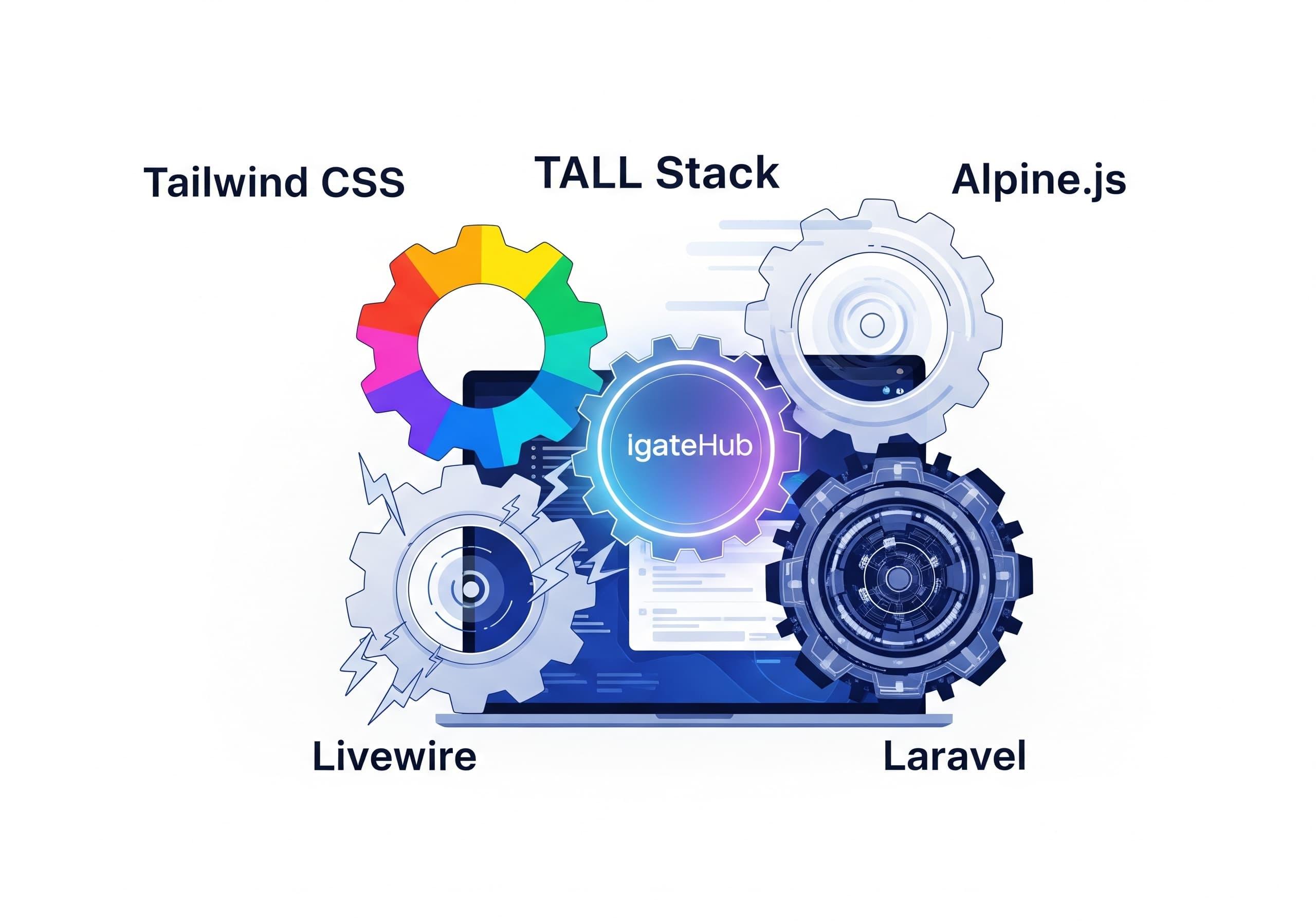We are always excited to take on new projects and collaborate with innovative minds.
+2348140827580
We are always excited to take on new projects and collaborate with innovative minds.
+2348140827580
Learn how to build a full-stack web application using the TALL stack, integrating Laravel, Alpine.js, Tailwind CSS, and Livewire for dynamic and responsive web development.

Building a Full-Stack App with the TALL Stack: Modern Web Development, Simplified (Especially for Laravel Fans!)
In the fast-paced world of web development, choosing the right tools can make all the difference. For years, building dynamic web applications often meant juggling a powerful backend (like Laravel with PHP) alongside a heavy JavaScript frontend framework (like React or Vue.js). While powerful, this "two-framework" approach can sometimes lead to complexity, context-switching, and slower development cycles.
But what if you could build highly dynamic, modern web interfaces with minimal JavaScript, staying mostly within the comfortable world of PHP and HTML? Enter the TALL Stack – a modern alternative that offers incredible efficiency and a streamlined development experience, especially for Laravel enthusiasts.
This guide will take a deep dive into the TALL Stack, explaining its components, why it's a game-changer, and how you can start building powerful applications with it.
The TALL Stack isn't just a random collection of tools; it's a carefully curated set of technologies that work together seamlessly to simplify full-stack web development. Each letter stands for a powerful component:
flex, pt-4, text-center, bg-blue-500) that you can directly apply in your HTML to build custom designs incredibly fast.x- attributes, often without writing a single line in a separate .js file.The TALL Stack offers compelling advantages that make it an attractive choice for many modern web development projects:
Understanding how these four components interlink is key to unlocking the TALL stack's power:
Ready to try building with TALL? Here's a quick overview of the setup process. We assume you have a basic Laravel development environment (PHP, Composer, local server) ready.
Start a New Laravel Project:
composer create-project laravel/laravel my-tall-app
cd my-tall-appInstall Livewire:
composer require livewire/livewireLivewire will automatically publish its assets for you.
Install Tailwind CSS:
npm install -D tailwindcss postcss autoprefixer
npx tailwindcss init -pThen, configure tailwind.config.js to scan your Blade files and update your resources/css/app.css (or similar) to include Tailwind's directives. Finally, ensure your webpack.mix.js (or Vite config) compiles your CSS.
Install Alpine.js: The easiest way is often to include it directly in your main Blade layout file (e.g., resources/views/layouts/app.blade.php) just before the closing </body> tag:
<script defer src=https://cdn.jsdelivr.net/npm/[email protected]/dist/cdn.min.js></script>(For production, you'd typically bundle it with NPM for better control).
Create Your First Livewire Component (Example: A Simple Counter)
Generate the Component:
php artisan make:livewire CounterThis creates two files: app/Livewire/Counter.php (your PHP logic) and resources/views/livewire/counter.blade.php (your HTML).
Edit app/Livewire/Counter.php:
<?php
namespace App\Livewire;
use Livewire\Component;
class Counter extends Component
{
public $count = 0; // Our dynamic property
public function increment() // Method to increase count
{
$this->count++;
}
public function decrement() // Method to decrease count
{
$this->count--;
}
public function render() // Renders the view
{
return view('livewire.counter');
}
}Edit resources/views/livewire/counter.blade.php:
<div >
<button wire:click="decrement" >-</button>
<span >{{ $count }}</span>
<button wire:click="increment" >+</button>
</div>(Notice the wire:click directives - that's Livewire's magic! And px-4 py-2 bg-red-500 are Tailwind classes.)
Include the Component in a Page: In any Blade view (e.g., resources/views/welcome.blade.php or a new one), add:
<livewire:counter />And ensure your main layout includes Livewire's scripts:
<head>
@livewireStyles
</head>
<body>
@livewireScripts
</body>
</html>npm run dev (or npm run watch) to compile your Tailwind CSS and other assets.Start Laravel Dev Server:php artisan serve and visit your page!
You've just built a dynamic counter using only PHP, HTML, and a sprinkle of framework magic!
The TALL stack is incredibly powerful, but like any tool, it has its ideal use cases:
Best Use Cases for TALL:
When to Consider a Full SPA Framework (React, Vue, Angular):
The TALL Stack offers an incredibly efficient, enjoyable, and powerful way to build modern, dynamic web applications. By allowing you to stay primarily within the Laravel/PHP ecosystem, it reduces complexity, speeds up development, and maintains excellent performance. If you're a Laravel developer looking to level up your full-stack skills without diving deep into complex JavaScript frameworks, or a business aiming for rapid development of robust web applications, the TALL Stack is definitely worth exploring. It's a testament to how modern tools can simplify the sophisticated demands of today's digital landscape. Ready to build your next dynamic web application with the TALL Stack, or need expert guidance to choose the right technology for your business? IgateHub's experts are here to help you design, develop, and deploy efficient, powerful digital solutions. Contact us today for a free consultation!
Your email address will not be published. Required fields are marked *